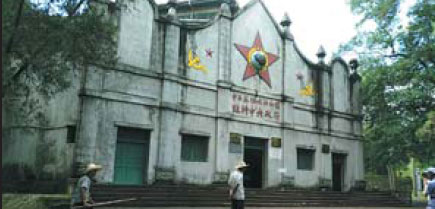Key sites help drive local niche sector
Jiangxi province, known as the cradle of the Chinese revolution in modern historical terms, is riding the crest of the "Red" tourism trend.
The number of tourists visiting the province in East China increased to nearly 121 million last year from 13.5 million in 2014, with tourism revenue surging to 108.9 billion yuan ($16.4 billion), an annual increase of nearly 93 percent.
The province is home to more than 2,300 historic revolutionary sites and memorials including Jinggang Mountain, which was modern China's first rural revolutionary center, developed by late Chairman Mao Zedong and other leaders in 1927.
The provincial capital of Nanchang is where Zhou Enlai led an uprising against Chiang Kai-Shek's nationalist army, leading to the forming of one of the first armed forces of the Red Army. The uprising is celebrated annually in China as the day the People's Liberation Army was founded.
Ruijin was the earliest capital for the government led by the Communist Party of China from 1931 to 1934 and the starting point of the Long March of the Red Army.
Both Nanchang and Ruijin are among the province's most popular tourist destinations.
With so many historic sites, Jiangxi was the first province in the country to propose the concept of "Red" tourism and decided to use revolutionary sites as key tourism resources just after the turn of the century.
Local authorities have established several tourism schemes, working groups and policies to boost the industry over the coming years.
"Red" tourism was designated as a pillar sector and a new growth spot of the local economy in 2001.
The Jiangxi government released a provincial red tourism development blueprint, the first of its kind in the country, in 2004 and held an annual themed tourism expo from 2005 to 2013.
An influx of capital has been drawn to the sector for developing infrastructure and influential scenic sites.
Data from the China National Tourism Administration shows that Jiangxi played a leading role in the development of the "Red" tourism industry, with its related market accounting for one-third of the country's total in 2011.
|
Former residence of the Chinese Soviet government in Ruijin. Liu Hui / For China Daily |
(China Daily 08/25/2016 page7)















